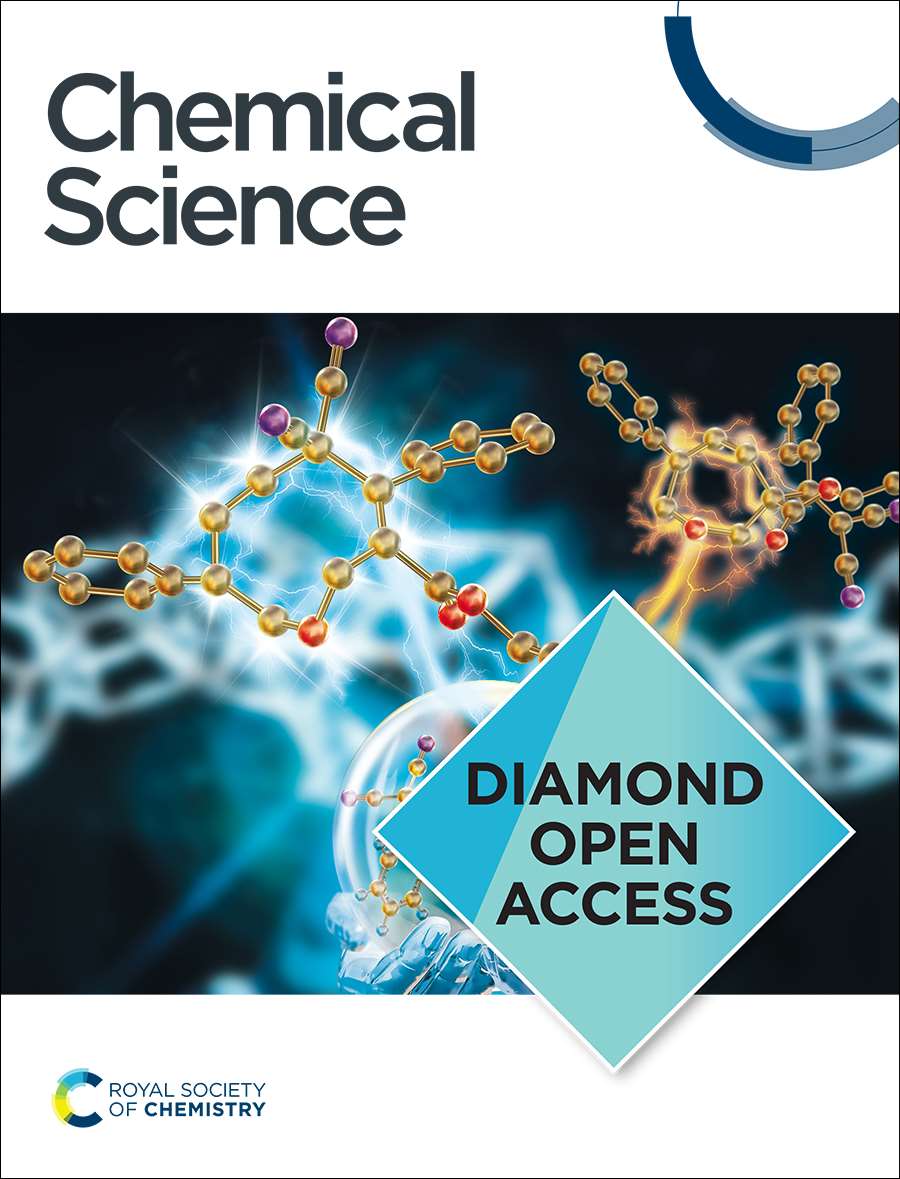瞬态铀(II)配合物的易溶N-C键裂解和芳烃还原
IF 7.4
1区 化学
Q1 CHEMISTRY, MULTIDISCIPLINARY
引用次数: 0
摘要
铀(II)的配合物仍然极为罕见,其反应性实际上尚未探明。本文报道了异电性双芳基氧化物U(III)配合物[U(κ6-{(tBu2ArO)2Me2-cyclam})I], A的还原,产生了一种罕见的高活性U(II)中间体,这使得分子内铀介导的N-C裂解成为罕见的例子,并影响芳烃还原,从而分离出U(IV)配合物[U(κ7-{(tBu2ArO)(tBu2ArO-κ2- n,C)Me2-cyclam})](2)和反夹心配合物[{U(κ5-{(tBu2ArO)2Me2-cyclam})}2(μ-η6:η6-苯)](3)。此外,U(II)依赖溶剂的反应性导致在乙醚中形成假定的U- n2配合物。计算、EPR和磁性研究表明,3的电子结构是两种能量非常接近的电子结构之间的平衡:(U(IV) -arene4- -U(IV)和U(III) -arene2- -U(III))。这些结果表明,多齿胺-酚酸盐配体可用于接触高活性的U(II)中间体,并提供了U(II)物种参与逆夹层配合物形成的证据。本文章由计算机程序翻译,如有差异,请以英文原文为准。
Facile N-C Bond Cleavage and Arene Reduction by a Transient Uranium (II) Complex
Complexes of uranium(II) remain extremely rare and their reactivity is practically unexplored. Here we report that the reduction of the heteroleptic bis-aryloxide U(III) complex [U(κ6-{(tBu2ArO)2Me2-cyclam})I], A, yields a rare and highly reactive U(II) intermediate that enables a rare example of intramolecular uranium mediated N-C cleavage and effects arene reduction resulting in the isolation of the U(IV) complex [U(κ7-{(tBu2ArO)(tBu2ArO-κ2-N,C)Me2-cyclam})] (2) and of the inverse-sandwich complex [{U(κ5-{(tBu2ArO)2Me2-cyclam})}2(μ-η6:η6-benzene)] (3) respectively. Moreover, the U(II) solvent-dependent reactivity results in the formation of a putative U-N2 complex in diethyl ether. Computational, EPR and magnetic studies indicate the electronic structure of 3 to be an equilibrium between two possible electronic structures very close in energy: (U(IV) -arene4- -U(IV) and U(III) -arene2- -U(III)). These results indicate that polydentate amine-phenolate ligands can be used to access highly reactive U(II) intermediates and that provides evidence that U(II) species are involved in the formation of inverse sandwich complexes.
求助全文
通过发布文献求助,成功后即可免费获取论文全文。
去求助
来源期刊

Chemical Science
CHEMISTRY, MULTIDISCIPLINARY-
CiteScore
14.40
自引率
4.80%
发文量
1352
审稿时长
2.1 months
期刊介绍:
Chemical Science is a journal that encompasses various disciplines within the chemical sciences. Its scope includes publishing ground-breaking research with significant implications for its respective field, as well as appealing to a wider audience in related areas. To be considered for publication, articles must showcase innovative and original advances in their field of study and be presented in a manner that is understandable to scientists from diverse backgrounds. However, the journal generally does not publish highly specialized research.
 求助内容:
求助内容: 应助结果提醒方式:
应助结果提醒方式:


